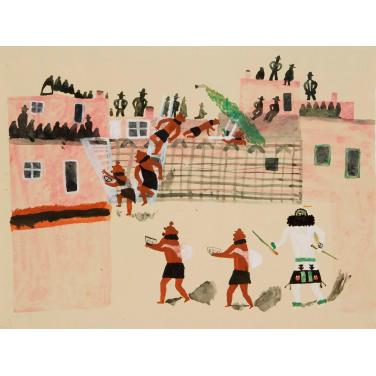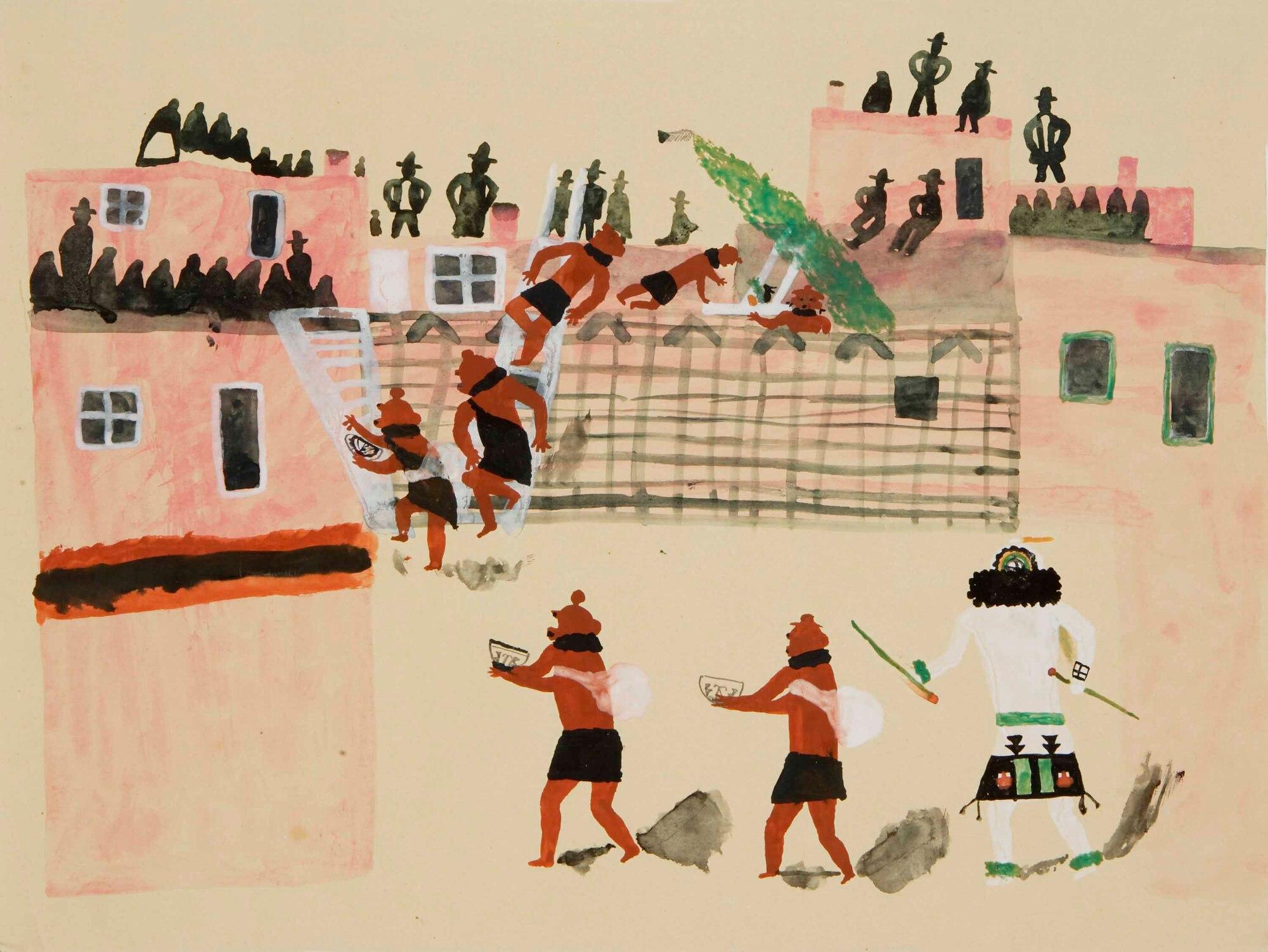
Photograph by Addison Doty. Copyright 2009 School for Advanced Research.
"Zuni Dance"
Date: before 1933
Artist or Maker: Unknown
Dimensions:
Overall: 50.8 x 38.1 cm (20 x 15 in.)
Overall1: 50.8 x 38.1 cm (20 x 15 in.)
Medium: paper | paint, watercolor
Credit Line: Gift of Mary Austin, 1933.
Place Made:
Zuni Pueblo, McKinley County, New Mexico, Southwest, United States, North America
Object Number: IAF.P29
Not on view
Tribal Collection Review RemarksJim Enote and Octavius Seowtewa during collection review visit June 10 and 11, 2009 (Events Record “Collection Review: Zuni Tribe, Review 2”): The catalog description for this piece calls it a “Mudhead Dance,” but that is incorrect. A better descriptive title for this painting is “Young Men’s Initiation Ceremony in the Central Plaza,” as previously suggested by Ed Ladd for IAF.P30, which shows another scene taken from this ceremony. (IAF.P183 also depicts this ceremony.)The setting for the scene is the north side of the Zuni dance plaza. Only 7 of the 10 koyemshis are represented here. This painting shows a scene after the main activities of the ceremony. The koyemshis go to the home of the boys who were initiated and receive a bowl of food from each household, which they then take to the kiva. When they come to the plaza area, each koyemshi announces the name of the boy whose house he went to, saying “I went to the house of ____________, and I have beans, stew…” The koyemshis are shown wearing a white cloth bag tied around their upper bodies like a bandolier bag. These bags are filled with bread. The tree shown near the kiva is a blue spruce tree.
Koyemshis are dancers that participate in many dances and ceremonies at Zuni. They have a role that mixes entertainment with illustrations of how people should not behave in society, so that people can better understand how they should behave. There are 10 koyemshis. All 10 of them always appear together; there cannot be more or fewer than 10 of them. Each one has its own attributes and personality. They can be distinguished by differences in their dress and certain behaviors that each exhibits.
In Collection(s)
The Indian Arts Research Center, in collaboration with Native American community scholars, strives to present accurate collections records. Records may be updated as new information becomes available and is reviewed with the Native American community having cultural affinity to particular items. Please write to iarc@sarsf.org if you have questions or concerns related to the documentation.
